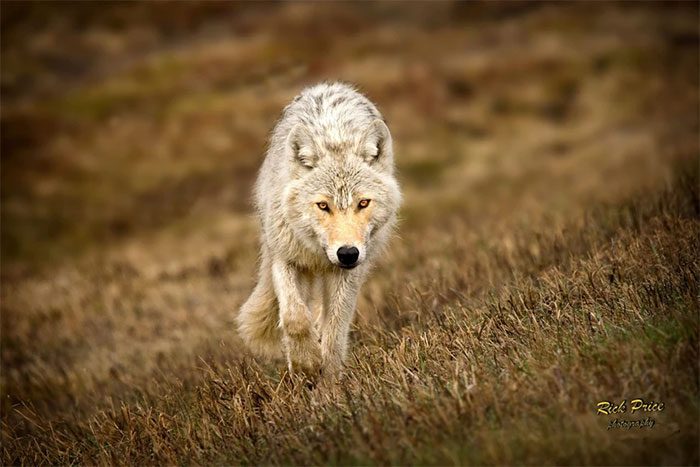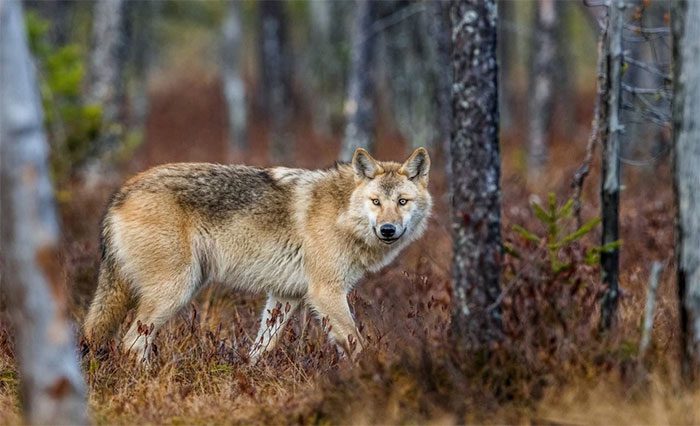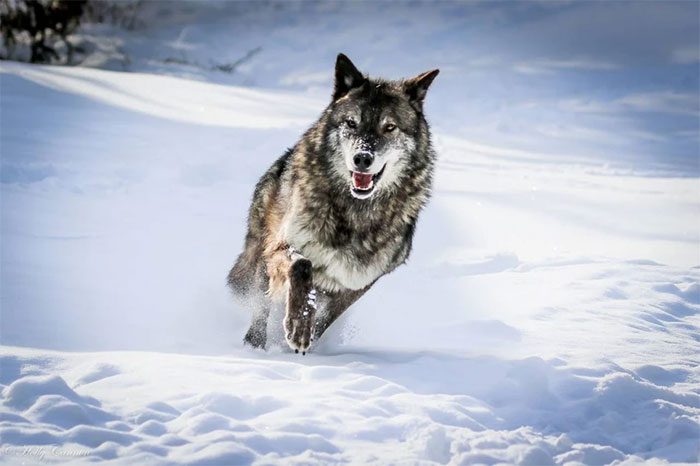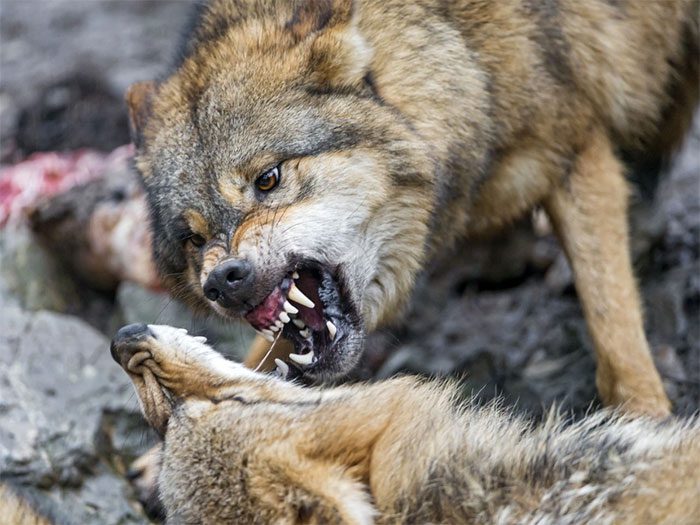When immersed in the bustling and fast-paced rhythm of urban life, few of us can imagine a strange encounter between humans and wolves in uninhabited lands.
How to React When Encountering Wolves in Uninhabited Areas
Encountering a wolf can be a relatively dangerous situation, especially in uninhabited areas. In this scenario, maintaining a calm and stable reaction is essential. It is crucial to stay composed. When we feel fear and anxiety, our ability to think and act is often compromised. When faced with a wolf, we need to remind ourselves to remain calm. We can try taking deep breaths to alleviate stress and regain our composure. Deep breathing helps reduce anxiety and tension, allowing us to maintain a calm mindset.

Wolves are highly intelligent animals. If you encounter a lone wolf, do not turn your back and run away. Try not to show fear if possible and do not panic. Wolves can sense human fear.
When we feel scared or panicked, we are more likely to make hasty or incorrect decisions. When facing a wolf, we should try to observe its behavior and movements to better understand its intentions. Understanding wolf habits and behavioral patterns can help us develop better coping strategies.
When encountering a wolf, we should try to avoid provoking or challenging it in any way. We can slowly back away and keep a safe distance between ourselves and the wolf. Do not turn suddenly or move quickly, as this might trigger the wolf’s instinct to attack.
When facing a wolf, we should also try to avoid making direct eye contact with it. Wolves often use direct eye contact as a challenge. Making eye contact with a wolf can make it uncomfortable and escalate the situation. Therefore, we should try to avoid eye contact with the wolf and slightly lower our head.

Try not to look directly into the wolf’s eyes, as they see this as a threat; instead, slightly lower your head – the wolf will interpret this as a submissive behavior and non-threatening. Back away slowly but do not turn your back on the wolf. Resist the urge to turn and run – if the wolf sees you running, it will see you as prey. You cannot run faster than a wolf.
We can attempt to avoid conflict with wolves by sending out some warning signals.
We can slowly raise our hands and make a small warning sound in a slow and steady voice. These actions can communicate to the wolf that we do not want conflict. However, when performing these actions, we need to maintain a safe distance and be prepared in case the wolf intends to attack.
If we find ourselves unable to maintain a safe distance from the wolf or feel threatened in any way, we should seek help from those around us as soon as possible. If there are others nearby, we can ask for support or contact local wildlife protection agencies.

If the wolf attacks you before you can escape, you should curl up in a fetal position, hide your face, and pay attention to covering your neck with your hands as best as possible. Wolves tend to attack the neck and throat. You may get bitten, but you will have a much higher chance of survival.
Consequences of Encountering Wolves in Uninhabited Areas
Uninhabited areas refer to regions that are inaccessible and devoid of human presence, where the ecosystem is relatively intact, and it is crucial to protect the interests of limited resources. However, these areas also harbor a certain number of wolves, which can conflict with human interests, necessitating corresponding protective measures.
Wolves are highly social animals, typically living in packs. They primarily obtain food through hunting, with meat being their main source of sustenance. In uninhabited areas, wolves can pose a potential threat to humans and livestock. They have sharp teeth and strong jaws that can easily crush bones and flesh, causing severe injuries or even death. Additionally, wolves can disrupt the ecological balance by competing with humans for limited food resources.
To reduce the risk of encountering wolves in uninhabited lands, humans have implemented a series of conservation measures. By observing and analyzing wolf behavior and habits in detail, we can gain a better understanding of their ecological needs and action patterns. These research findings provide the basis for developing protective measures.

They have sharp teeth and strong jaws that can easily crush bones and flesh. (Illustrative image).
Establishing special reserves in uninhabited areas can reduce direct human-wolf interactions and prevent conflict. Reserves provide food and relatively scarce habitats, promoting the reproduction and survival of wolves. Additionally, reserves can also limit human activities and reduce human interference with wolf populations.
Education and awareness-raising are also essential aspects of wolf conservation. By educating the public about the ecological value and conservation significance of wolves, understanding and support for wolves can be enhanced. Communities and schools can organize lectures and exhibitions to convey the importance of wolves to the public and remind people to protect their ecological environment.
Current protective measures are not always effective, as interactions between wolves and humans still occur due to unclear boundaries and poor regulations concerning uninhabited lands. Sometimes, due to wolves’ strong climbing abilities and adaptability, the fences of reserves can be breached. Additionally, wolves’ hunger tolerance and high adaptability may lead them to continue encroaching on human territories in search of food, resulting in conflicts with humans. Some wrongful human behaviors, such as illegal hunting and trapping, can also threaten the survival of the wolf population.


















































